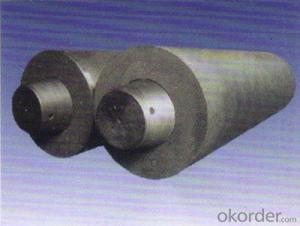When it comes to the world of metallurgy and foundries, graphite electrodes play a crucial role. They are the heart and soul of the electric arc furnaces that melt and refine metals. But with so many graphite electrode buyers out there, how do you make the right choice? Let’s dive into the world of graphite electrodes and find out what makes a great one.
First things first, let’s talk about the raw material. The quality of graphite electrodes depends heavily on the quality of the graphite used. There are two main types: flake graphite and needle coke. Flake graphite is more common and is known for its affordability, but needle coke offers superior electrical conductivity and mechanical strength. So, if you’re looking for a high-performance electrode, needle coke is the way to go.
Next up, we have the manufacturing process. The way a graphite electrode is made can greatly affect its performance. Some manufacturers use a baking process, while others rely on pitch impregnation. Baking is a traditional method that involves heating the graphite at high temperatures to remove impurities and increase its density. Pitch impregnation, on the other hand, involves soaking the graphite in a pitch binder to improve its structural integrity. Both methods have their pros and cons, so it’s essential to choose a manufacturer that aligns with your specific needs.
Now, let’s talk about the size and shape. Graphite electrodes come in various sizes and shapes, and the right choice depends on your furnace’s requirements. Standard sizes are usually available, but custom sizes can also be made to fit your specific needs. The shape of the electrode can also affect its performance. For example, a UHP (Ultra High Power) electrode is designed for high current and is ideal for large furnaces, while an HP (High Power) electrode is suitable for medium-sized furnaces.
Another important factor to consider is the grade of the electrode. Graphite electrodes are graded based on their ash content, which is a measure of impurities. Lower ash content means fewer impurities and better performance. So, when choosing a graphite electrode, always look for a high-grade product with low ash content.
Durability is also a key factor. You want an electrode that can withstand the harsh conditions of the furnace and last for a long time. This is where the density and strength of the graphite come into play. A high-density electrode will be more durable and resistant to wear and tear.
And let’s not forget about the environmental impact. The production of graphite electrodes can have a significant impact on the environment, from the mining of raw materials to the manufacturing process itself. So, it’s essential to choose a manufacturer that follows sustainable practices and minimizes its environmental footprint.
When it comes to pricing, it’s not always about getting the cheapest option. While it’s tempting to go for the lowest price, remember that quality and performance should not be compromised. A good graphite electrode may cost more upfront, but it will save you money in the long run by providing better performance and lasting longer.
Finally, don’t underestimate the importance of customer service. A reliable supplier should be able to provide you with the support and information you need to make an informed decision. They should also be able to deliver the electrodes on time and address any issues that may arise.
In conclusion, making the right choice when it comes to graphite electrode buyers involves considering several factors, including the raw material, manufacturing process, size and shape, grade, durability, environmental impact, pricing, and customer service. By taking the time to evaluate these factors, you can ensure that you select the best graphite electrode for your needs and enjoy a more efficient and sustainable operation.

